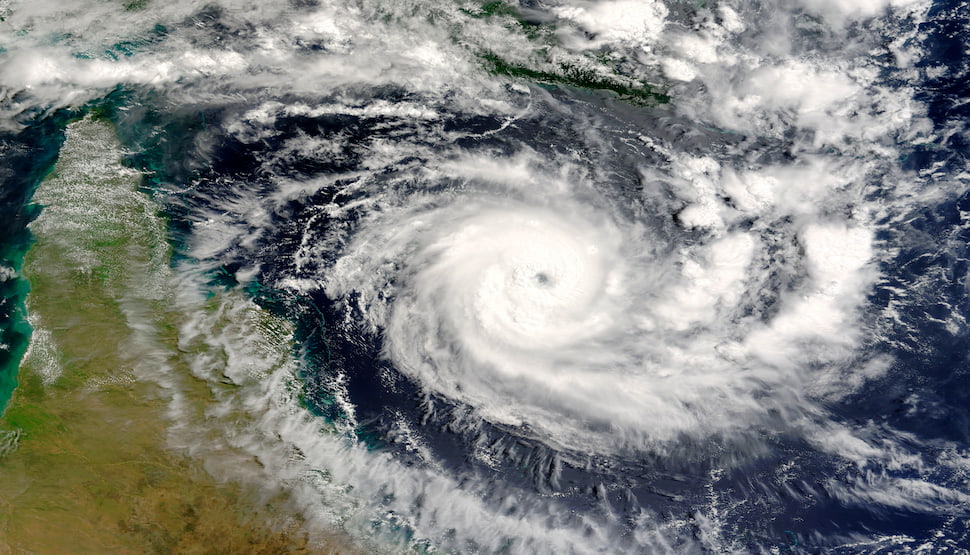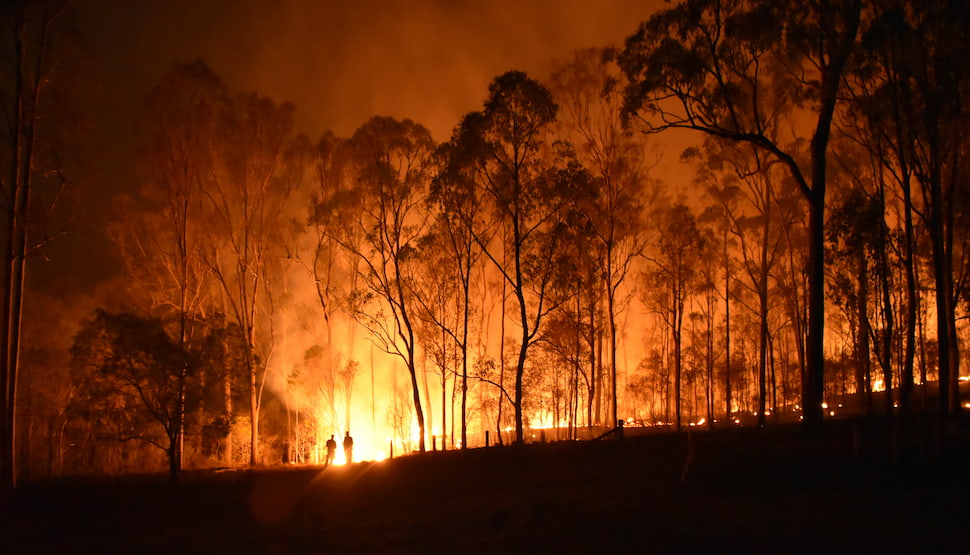Australian climate risks for summer 2024/25

Six tips for commercial property protection
Australia’s Bureau of Meteorology (BOM) has spoken. The long-range forecast for summer is in, offering three main takeaways:
- Above average rainfall is likely across parts of eastern and western Australia.
- Warmer than average days and nights are likely to very likely across most of Australia.
- Unusually high minimum temperatures are very likely for much of northern and eastern Australia.
As we mark the 25th anniversary of the infamous 1999 Sydney hailstorm, the summer of 2024/25 looms with its own set of climate risks. For commercial property owners and risk managers, understanding and preparing for extreme weather is crucial to safeguarding investments and ensuring operational continuity. Here is FM’s guide to the six most critical climate risks to be aware of this season.
1. Tropical Cyclones
Tropical cyclones are a perennial threat to northern Australia, bringing destructive winds, torrential rains, and storm surge. This summer, the risk remains high, particularly for properties in Queensland and the Northern Territory. Ensuring that buildings are cyclone-rated, with reinforced structures and secure roofing, is essential. Additionally, having an emergency response plan and adequate insurance coverage can mitigate the financial impact of these powerful storms.
2. Severe Thunderstorms
Severe thunderstorms, often accompanied by lightning, heavy rainfall, and hail, can occur with little warning. These storms can cause significant damage to commercial properties, from shattered windows to flooded basements. Investing in robust storm shutters, maintaining clear drainage systems, and regularly inspecting roofs for vulnerabilities can help protect against storm damage.

3. Flooding
BOM is currently on La Niña Watch, meaning some signs remain that a La Niña may form later in 2024, but the chance of a La Niña event developing in the coming months has decreased compared to recent outlooks. If it does, La Niña conditions are expected to bring increased rainfall, and the risk of flooding is elevated, especially in eastern and northern regions. Flood mitigation measures, such as installing sump pumps, elevating critical infrastructure, and ensuring proper drainage, are vital. Reviewing and updating flood insurance policies can also provide a financial safety net.
4. Heatwaves
While La Niña might temper extreme heat, climate change continues to drive periods of intense heat, particularly in southern coastal areas, hence BOM’s forecast for above average temperatures through February. Heatwaves can strain cooling systems, increase energy costs, and affect employee productivity. Investing in energy-efficient HVAC systems, implementing heat-reflective roofing, and providing shaded outdoor areas can help manage these impacts.
5. Bushfires
Bushfires remain a significant threat, particularly in southern and eastern Australia. The combination of high temperatures, dry conditions, and strong winds can lead to devastating fires. For commercial properties near bushland, creating defensible spaces, using fire-resistant building materials, and having a bushfire emergency plan are critical steps in reducing risk.

6. Hail
On April 14, 1999, Sydney experienced its costliest natural disaster when a supercell storm unleashed massive hailstones, causing more than $1.7 billion in insured damage, with the total bill (including uninsured damage) estimated to be around $2.3 billion. As we commemorate this event, the risk of hail remains a concern. Hailstorms can cause extensive damage to roofs, windows, and outdoor equipment, and hail damaged solar panels can quickly become a fire hazard. Using hail-resistant materials, installing protective window films, and having a rapid response plan for repairs can mitigate the impact of these icy missiles.
What’s next?
The summer of 2024/25 promises to be a season of climate risks, but with proactive planning and strategic investments, commercial property owners can navigate these hurdles effectively. By staying informed about weather forecasts, investing in resilient infrastructure, and having comprehensive insurance coverage, you can ensure your commercial properties remain safe, operational, and profitable throughout the summer.
Stay prepared, stay resilient, and let the summer of 2024/25 be a testament to your foresight and planning.
